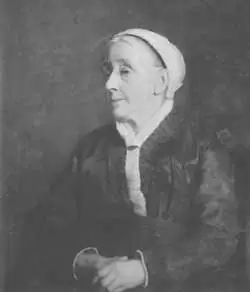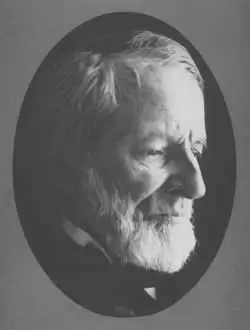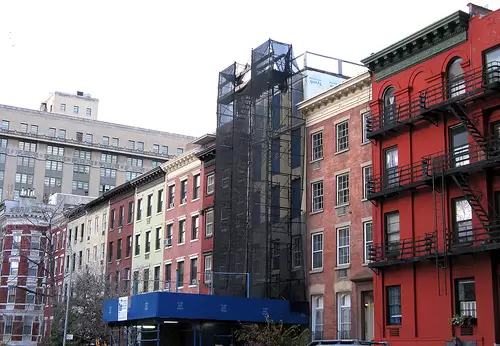I’ve been catching up on some e-mail this week and came across a link Ruth Edebohls (one of our great Historic Fund tour guides and a great fan of New York history) sent me to a Daily News story from January, 2012. It reports that a marker was unveiled in front of the home of Abigail Hopper Gibbons and James Gibbons, at 339 West 29th Street in Manhattan.
I knew that the Gibbons had been well-known abolitionists of 19th-century New York who are interred at Green-Wood. Here’s what I wrote about them in my book, Brooklyn’s Green-Wood Cemetery: New York’s Buried Treasure, in the passage that is devoted to New York City’s Civil War Riots of July, 1863:
The homes of abolitionists and Republicans became prime targets of the mobs. On July 14, at about noon, two men on horseback, shouting and waving swords, lead a mob against the home of abolitionists ABIGAIL HOPPER GIBBONS (1801-1893) and JAMES S. GIBBONS (1810-1892) (a cousin of Horace Greeley) near Eighth Avenue and 29th Street. The Gibbons’s two daughters fled to a neighbor’s house as men with pickaxes stormed in and destroyed what they could. Other rioters joined in, looting and smashing what remained, only to be driven off twice by soldiers and police, and to return a third time to set the house on fire. Neighbors, concerned that the fire might spread to their houses, extinguished the flames.
I don’t think I knew then that their home was also part of the Underground Railroad. But, since then, their home has been recognized as the only documented Manhattan station on the Underground Railroad. It was in the Gibbons’s home that fugitive slaves found a safe place to stay on their journey to freedom.
This is Abigail:

And this is her husband, James Sloan Gibbons:

Here’s what the block on 29th Street looked like circa 2009, when construction was still in progress–the home they lived in is the one that is shrouded.

Here’s a YouTube video from 2008 about efforts to protect the Gibbons’s home.
And here is the Daily News’ video of the January unveiling of the historical marker describing the significance of what had been the Gibbons’s home.
For more on the Abigail and James, see my earlier blog posts on their fascinating lives, and the lives of those they touched, including two ex-slaves who are interred at Green-Wood in their lot.
Thanks for the kind mention, Jeff. I will be visiting Abigail (Abby) and her husband James on my “Green-Wood’s Great Women” walking tour on Mother’s Day, May 13th. She was a great and good woman and is one of my favorite “residents”.
Question: Does anyone know, though Quakers, whether Abby Hopper Gibbons and James Sloan Gibbons (or their children) had any relationship with the Church of the Holy Apostles (Episcopal) a block or so south of their house? I’m looking for connections between the Church and the underground railroad or abolitionism.
That I do not know. Put your question up in the hope that someone out there might know the answer.